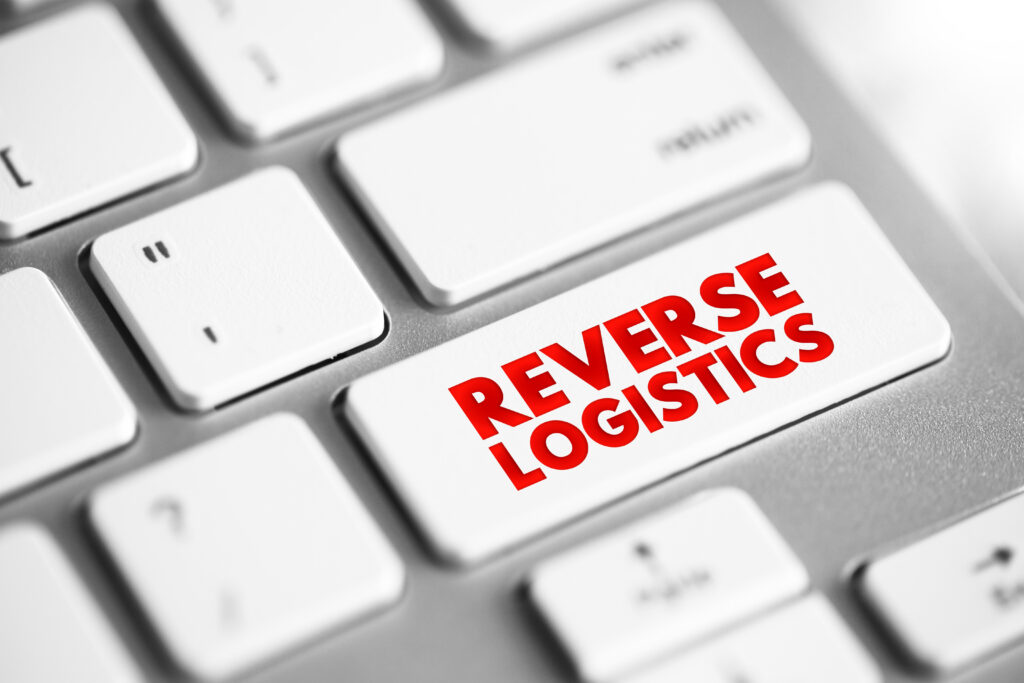Navigating the reverse logistics landscape- Strategies

What is reverse logistics?
Reverse logistics is the process that occurs when a customer returns goods to the seller or manufacturer for replacement or further handling. The customer can be an individual consumer or any type of organisation. Whichever, the returns process must be efficiently and cost-effectively managed.
The rapid growth of eCommerce has driven an increase in the volume of returns since the pandemic putting pressure on facilities and transport. The return rate for online purchases globally is now between 20-30% whilst the rate for in-store purchases is in the 8-10% range. The reality is most warehouses were not designed for processing returns.
Why do customers return products?
Items are returned for a variety of reasons. It could be that:
- It does not work to the specification.
- the wrong product or product size was delivered.
- it was damaged upon arrival.
- it was delivered late/no longer needed.
- it fails to match customer expectations.
- it needs to be replenished.
In the drinks sector, containers are returned every day for reuse, they must be transported, stored, cleaned, and refilled. The apparel industry experiences a high number of returns. Shoes and clothing have strong seasonality, short sales cycles, and many SKUs each season. Returns are complicated: different SKUs can be mixed in the same packaging box, each with a different reason for the return.
The basic steps in the reverse logistics process
- Based on instructions from the seller, the customer initiates the return process. The seller defines the transportation to be used and the destination.
- The seller assesses the situation in the defined location and inspects the item(s) to decide on the next steps. It could be to clean, repair, replace, or resell items or if not, recycle, re-use or dispose.
- The customer is advised of the decision and a) refunded the cost of the item or credited or b) provided with a similar item or a replacement.
Common reverse logistics challenges
The returns process, whether in the B2C or B2B environment, can be disorganised and frustrating for both the seller and the purchaser. The main challenges are:
- The growing cost of processing returns
- Limited warehouse space for receiving and storing returns.
- Unscheduled returns that make forecasting and budgeting difficult.
- Unrealistic customer expectations. Problems occur where there is no firm, clear returns policy for customers to follow.
- Fraudulent returns: the wrong or a used item is returned.
- The time and cost of processing damaged goods
- More carbon emissions, packaging, and waste
Improving the process with technology
The true cost of product returns is more than the logistics and warehousing costs, it includes the impact on customer retention and future sales. The process of handling returns influences warehouse operations, staffing, inventory, and transportation. Technologies such as inventory, warehouse, and transport management systems (IMS, WMS and TMS) provide the platform on which a reverse logistics strategy can be implemented. Comprehensive returns management systems (RMS) are becoming available that integrate with other supply chain software solutions. They analyse and deliver insights into costs that identify inefficiencies and areas for improvement.
Through providing workers with technology tools such as voice headsets for packing, scanners and mobile devices for real-time tracking and logging of returns, workflow can be improved, and errors reduced.
The benefits of optimising the reverse logistics process include:
- Lower operational costs
- Better customer service and retention
- Fewer product losses
- Less supply risk.
- Less waste, more efficient use of fuel and energy
Strategies towards a more effective reverse logistics process
Data visibility is the key to understanding the customer and their experience. A customer who finds it easy to return or exchange an item with minimum fuss is likely to make repeat purchases. Technology is the enabler; real-time Information provides insights. It is possible to reduce returns, identify, refurbish, and repair priorities, identify re-sale opportunities, and reduce waste. An efficient reverse logistics process using available technologies can provide a competitive advantage.
What you can do NOW to improve your returns process
Depending on what you are already doing well, you can review these areas:
- Revisit your returns policy and procedure. Is the process clear to the customer including documentation, labels, packaging, and refunds?
- When you receive a returned item, do you have a plan and a place for handling it? This activity includes inspection, allocating it to a returns category, and storing it before the next action, e.g., repair, recycle, disposal.
- How effective is your method for tracking items in real time? Do you have the tools to know where an item is in the process?
A well-managed returns process is becoming part of the sale. There are opportunities to outsource some, or all, reverse logistics operations to an experienced third-party logistics partner (3PL) that can do it cheaper and more efficiently. As B2C online purchases continue to increase, consumers’ expectations for fast and easy returns will only turn up the pressure. B2B product returns will increase together. A smooth and efficient reverse logistics process will become more critical in containing costs.
SCCG has the expertise to advise you on reverse logistics. Our logistics consultants can provide tailored recommendations to help you tackle your returns, minimising the cost without compromising the needs of your customers.














